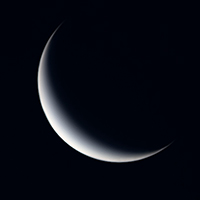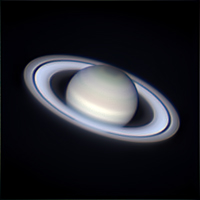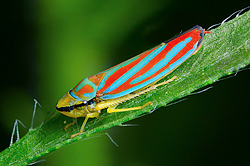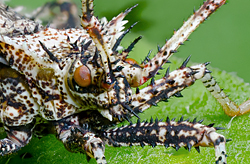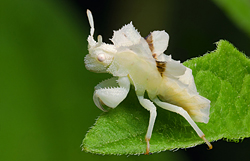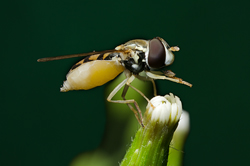The purpose of this feature is to give scout leaders, educators and naturalists an idea of some of the natural events coming up each month. We will try to cover a variety of natural events ranging from sky events to calling periods of amphibians, bird and mammal watching tips, prominent wildflowers and anything else that comes to mind. We will also note prominent constellations appearing over the eastern horizon at mid-evening each month for our area for those who would like to learn the constellations. If you have suggestions for other types of natural information you would like to see added to this calendar, let us know! Note: You can click on the hyperlinks to learn more about some of the featured items. To return to the Calendar, hit the "back" button on your browser, NOT the "back" button on the web page. All charts are available in a "printer friendly" mode, with black stars on a white background. Left clicking on each chart will take you to a printable black and white image. Please note that images on these pages are meant to be displayed at 100%. If your browser zooms into a higher magnification than that, the images may lose quality. Though we link book references to nationwide sources, we encourage you to support your local book store whenever possible.
Notes and Images From July 2015 In late June, we were excited to get the opportunity to begin an all taxa biodiversity inventory for Owl's Hill Nature Sanctuary in Brentwood, Tennessee. The inventory will run until June, 2016. As part of that project, we did a butterfly and dragonfly bioblitz on July 11th. It was a hot, humid day, but I had one of the better jobs, spending most of the morning in a pond up to my waist in water. I could identify most of the dragonflies and damselflies I found, but one dragonfly seemed to defy identification. I photographed it, then sent the image to BugGuide for help on the id. You can imagine our surprise when a couple from Texas said it looked very much like a species they had there, a Thornbush Dasher. In checking the range, I found that this species was mainly a Texas species, but that there were records east into Arkansas. There were, however, no records for Tennessee. I called Richard Conners, a friend and a dragonfly expert, to make sure that I was not overlooking something obvious. After reviewing the images, he agreed on the identification. I submitted the record, along with more images taken on August 14th, for approval to Odonata Central, and it was confirmed as a new state record for Tennessee. In fact, to our knowledge, it has not been previously recorded east of the Mississippi River.
The question of course is how did it wind up here? We'll never know for sure, but perhaps it was storm-blown into our area. Time will tell if it is part of a true range expansion for this species. But it's always a thrill to find something new and unexpected!
Later that same week I returned to the pond accompanied by Richard and Denis Lovell. The Thornbush Dasher was still there, and after Richard photographed it, we took advantage of his expertise and found several species of forktails. These damselflies are tiny, and rather than zipping around like dragonflies, they seem to float slowly between patches of vegetation at the pond's edge.
It was a revelation to see the forktails up close. Beautifully colored, they appear jewel-like. Above is an image of two mating Eastern Forktails we found on a stem of grass. The eyes are quite striking.
The male is at right, and is clasping the female by the front of her thorax with special appendages at the tip of his abdomen. Note that the female is not perched on the grass stem like the male, but suspended in midair. Dragonflies also do this, and you can often see both groups flying "in tandem." Before mating, the male touches the tip of his abdomen to special "accessory genitalia" located on the second abdominal segment, and deposits his sperm there. When the female is ready to mate, she curls her abdomen up to touch the tip of her abdomen to the males accessory genitalia, thus fertilizing her eggs. This position is called the "wheel position," though it's more heart-shaped. In some species the female then detaches and lays her fertilized eggs. In many damselflies, such as the Familiar Bluet shown at right, the two do not separate, but fly in tandem while the female lays her eggs. The eggs of most species hatch in three to four weeks. Each species then goes through an aquatic larval stage. The length of this stage varies from as little as a month to several years. The dragonfly nymphs are fierce predators in ponds, feeding on just about anything smaller than they are. They are also an important food source for fish, amphibians, turtles and birds. At the end of this period the nymph leaves the water, splits its exoskeleton, and transforms into its adult form. The two Familiar Bluets shown are mating on the stem of an Arrowhead plant. You can see the shadow of an Arrowhead leaf on the water behind the pair. This image was taken on July 11th during the bioblitz. These bluets are just one of many beautiful species you can find in just about any small pond.
After I had made the image of Pluto last month, my SBIG camera, which has performed faithfully for many years, began failing to connect with my computer. I finally had to face the fact that my camera had a long trip to make, by truck, to the SBIG repair facility in Santa Barbara, California. I talked with Bill Lynch of SBIG, and he seemed optimistic that the camera could be repaired. In doing his expert examination of the camera he found that, in addition to a shorted out electrical component, my camera has been serving as a pretty good home for a variety of spiders, whose webs he found in several places (the spiders had evidently baled out before being shipped to California). Much before I expected, Bill wrote me and said my camera was ready to go again. Besides repairing the camera, he cleaned it, resealed the chamber that holds the CCD sensor, cleaned the sensor and everything else inside and out. When I got it back it looked and operated like a brand new camera! After a few days of mediocre weather I finally got a chance to try out my "new" camera on July 25th. The night was very humid, and though the atmosphere was very steady, it certainly was not a sparklingly clear night. Also, for the first half of the session, a waxing gibbous moon was above the horizon, brightening the sky background. Though I could have chosen a high-contrast target like a globular star cluster, I decided to image a faint nebula in Cygnus called the Cocoon Nebula.
The Cocoon Nebula sits not far from the bright star Deneb, in the tail of Cygnus, the swan. It is in the heart of the Milky Way, and in the above image you can see just how dusty the Milky Way is. Tendrils of dust wind throughout the image, like smoke from a fire. It is these dust clouds that we see in silhouette when we look at an edge-on galaxy like NGC 891. When we look at the Milky Way we're simply looking at these clouds from the inside of the galaxy, rather than the outside. The Cocoon Nebula is part of a large molecular cloud that is a star-forming region. The central star of the nebula formed out of the dust of the cloud, and now excites the cloud around it to emit a pink/red glow in the wavelength of hydrogen alpha light. Seen also are regions of reflection nebulosity, which appears blue, or purple if it is combined with the hydrogen alpha light. Finally, some of the dust is not illuminated, and just appears dark, hiding the stars behind it. The new star is cocooned in layers of dust. This is a very faint nebula to observe visually, though we plan to spot it when we get an opportunity. Photographically, its shape reminds me of the head of an Eastern Screech-owl!
Sky Events for August 2015: The Perseid Meteor Shower peaks the evening of August 12th and 13th. The moon is a waning crescent, so conditions should be good for the shower. This is a broad-peaked shower, so you may want to also observe the evenings before and after. Evening Sky:
Venus is a beautiful target when it is visible this month. It passes between Earth and the Sun on August 15th, but for a few days at the beginning of the month and a few days towards the end of the month you can see a beautiful thin crescent as shown at right. You will want binoculars to help see the tiny crescent and pick it out of the bright sky background. On August 1st, scan for it after sunset (that is, don't take a chance damaging your eyes). Look about 6 degrees above the horizon between sunset and about 30 minutes after sunset. Towards the end of the month, look for it just before sunrise. To see the crescent phase, the brighter the sky background, the better. You can also use a neutral filter to darken Venus a little. Jupiter is above and to the right of Venus on August 1st. It will soon disappear into the twilight glow. Mercury is the third planet visible low in the west, but will remain pretty low all month long.
Look for Saturn in the south at dusk about 35 degrees above the horizon at the beginning of the month. The planet will be in Libra this month. Saturn's rings have opened up to more than 24 degrees tilt, giving a wonderful view of the ring system through just about any aperture telescope. Observe Saturn early in the evening to get the best view. Morning Sky: As described above, look for the thin crescent of Venus low in the eastern sky before dawn towards the end of the month. Mars rises about 4:45am at the beginning of the month in Gemini, a little over an hour before sunrise. The red planet (or should we now be saying the closest red planet) appears very small in a telescope, only about 3.6 seconds of an arc in diameter. By the end of the month it will rise about two hours before the Sun. All times noted in the Sky Events are for Franklin, Tennessee and are in Central Daylight Time. These times should be pretty close anywhere in the mid-state area.
Constellations: The views below show the sky looking east at 10:00pm CDT on August 15th. The first view shows the sky with the constellations outlined and names depicted. Star and planet names are in green. Constellation names are in blue. The second view shows the same scene without labels. New constellations this month are Pegasus, the Flying Horse, Andromeda, Princess Andromeda, Triangulum, the Triangle, Pisces, the Fishes, and Aquarius, the Water Bearer. In Pegasus, the reddish star Enif marks the nose of the flying horse. Just above Enif is the globular cluster Messier 15, a nice ball of stars about 33,600 light-years away. The cluster was discovered by Jean Dominique Maraldi on September 7th, 1746. Maraldi was searching for De Chéseaux' Comet at the time. This globular cluster is one of the densest known in our Milky Way galaxy. It contains nine known pulsars. As with any deep sky object, you should wait until it has climbed high above the horizon to get the best telescopic view. It is easily visible in binoculars, and is said to be visible to the naked eye under really dark skies. In a small telescope it will appear like a little cotton ball of faint light. With increasing aperture, you'll be able to spot some of the faint stars around the periphery of the cluster. Be sure to use averted vision, looking to one side of the cluster, to allow the cluster's light to fall on the light-sensitive rod cells of your eye.
On Learning the Constellations: We advise learning a few constellations each month, and then following them through the seasons. Once you associate a particular constellation coming over the eastern horizon at a certain time of year, you may start thinking about it like an old friend, looking forward to its arrival each season. The stars in the evening scene above, for instance, will always be in the same place relative to the horizon at the same time and date each August. Of course, the planets do move slowly through the constellations, but with practice you will learn to identify them from their appearance. In particular, learn the brightest stars for they will guide you to the fainter stars. Once you can locate the more prominent constellations, you can "branch out" to other constellations around them. It may take you a little while to get a sense of scale, to translate what you see on the computer screen or what you see on the page of a book to what you see in the sky. Look for patterns, like the stars that make up the "Square of Pegasus." The earth's rotation causes the constellations to appear to
move across the sky just as the Sun and the Moon appear to do. If you go
outside earlier than the time shown on the charts, the constellations will be
lower to the eastern horizon. If you observe later, they will have climbed
higher. As each season progresses, the earth's motion around the Sun
causes the constellations to appear a little farther towards the west each night
for any given time of night. If you want to see where the constellations
in the above figures will be on September 15th at 10:00pm CDT, you can stay up
till midnight on August 15th and get a preview. The westward
motion of the constellations is equivalent to two hours per month. Recommended: is beautiful, compact star atlas.A good book to learn the constellations is Patterns in the Sky, by Hewitt-White. You may also want to check out at H. A. Rey's classic, The Stars, A New Way to See Them. For skywatching tips, an inexpensive good guide is Secrets of Stargazing, by Becky Ramotowski.
A good general reference book on astronomy is the Peterson
Field Guide,
A Field Guide to the Stars and Planets, by Pasachoff. The book retails for around $14.00. The Virtual Moon Atlas is a terrific way to learn the surface features of the Moon. And it's free software. You can download the Virtual Moon Atlas here. Cartes du Ciel is a great program for finding your way around the sky. It is also free, and can be downloaded here. Apps: We really love the Sky Safari Pro application described here. For upcoming events, the Sky Week application is quite nice. Both apps are available for both I-phone and Android operating systems. The newest version, Sky Safari 4, is available from Play Store or from i-tunes.
Amphibians:
Listen for Cope's Gray Treefrogs, Gray Treefrogs, Bird-Voiced Treefrogs, Green Treefrogs and Barking Treefrogs. Northern Cricket Frogs and Southern Cricket Frogs are still calling, as are American Bullfrogs and Green Frogs. Spring Peepers have a much higher, shorter call this time of year. On cooler nights listen for American Toads, but be wary of the many calling crickets this time of year. After heavy rains listen for the high, insect-like call of the Eastern Narrow-mouthed Toad and the strange-sounding Eastern Spadefoot. Recommended: The Frogs and Toads of North America, Lang Elliott, Houghton Mifflin Co
Insects: By day, some of the more colorful insects can be found in patches of milkweed. Monarch butterflies lay their tiny cream-colored eggs on the milkweed leaves and you can usually find a Monarch caterpillar munching on the foliage. If you’re lucky, you might even find the beautiful, jewel-like chrysalis of the Monarch nearby. To see a complete image sequence of a Monarch caterpillar forming its chrysalis and emerging as a butterfly, click here. Scarlet and Green Leafhoppers, Large Milkweed Bugs and Red Milkweed Beetles all add their brilliant warning colors to the scene. This is the time of year to explore your garden or other outside habitat for insects. At right are some of the species we've photographed, and they are all in "zoomify" mode. That means you can click on the image of each species, and you'll be taken to a browser where you can zoom for a highly magnified view. It's like a virtual magnifying glass. Use the slider or your mouse wheel to adjust magnification, and left click and drag to move around the image. Just hit the "back" button to return to this page and check out the next species. Scarlet and Green Leafhoppers are a common and beautiful species. They feed on the juices of weeds and cultivated plants. Their feeding damages their host plant, but in small numbers this is not significant. This species over winters in the leaf litter Now that we've had the beauty, it's time for a couple of beasts. This Helmeted Squash Bug nymph looks pretty intimidating, but is harmless. It's a vegetarian that feeds on members of the squash family. So no need for fear. Unless you are a squash - then be very, very scared. This Ambush Bug nymph looked like a tiny white dragon on a high perch surveying its kingdom. It was only about 1/4 of an inch in length. These insects are voracious predators, capable of killing prey much larger than themselves. Look carefully in the flowers and you may spot one waiting to ambush an unlucky honey bee or other visitor. The Toxomerus Hover Fly is an aerodynamic marvel. Though it looks like it might be something you need to swat, don't do that! These hover flies are completely harmless and feed on the nectar of flowers. The larva are said to be as helpful as ladybug beetles in controlling aphids. Books:The Songs of Insects, by Lang Elliott & Will Hershberger (Houghton Mifflin) - Beautifully written and including many spectacular images, this book includes an audio CD and detailed range maps. It was a real bargain for $19.95, and you can now get it from Amazon for less than $14.00. Crickets and Katydids, Concerts and Solos, Vincent G. Dethier (Harvard University Press) - In this book Vincent Dethier writes of his experiences in the 1930's working as a field assistant gathering insects so that their songs could be recorded and analyzed. Now out of print, you should still be able to locate a copy by clicking the link above. An inspiring book and one of our favorites. Online: Singing Insects of North America - This is a terrific online reference. Songs of Insects - Another great reference from Lang Elliott and Will Hershberger. Archives (Remember to use the back button on your browser, NOT the back button on the web page!) Natural Calendar November 2014 Natural Calendar September 2014 Natural Calendar February 2014 Natural Calendar January 2014 Natural Calendar December 2013 Natural Calendar September 2013 Natural Calendar February 2013 Natural Calendar January 2013 Natural Calendar December 2012 Natural Calendar November 2012 Natural Calendar September 2012 Natural Calendar February 2012 Natural Calendar December 2011 Natural Calendar November 2011 Natural Calendar September 2011 Natural Calendar December 2010 Natural Calendar November 2010 Natural Calendar September 2010 Natural Calendar February 2010 Natural Calendar December 2009 Natural Calendar November 2009 Natural Calendar September 2009 Natural Calendar February 2009 Natural Calendar December 2008 Natural Calendar November 2008 Natural Calendar September 2008 Natural Calendar February 2008 Natural Calendar December 2007 Natural Calendar November 2007 Natural Calendar September 2007 Natural Calendar February 2007 Natural Calendar December 2006 Natural Calendar November 2006 Natural Calendar September 2006 Natural Calendar February 2006 Natural Calendar December 2005Nature Notes Archives: Nature Notes was a page we published in 2001 and 2002 containing our observations about everything from the northern lights display of November 2001 to frog and salamander egg masses. Night scenes prepared with The Sky Professional from Software Bisque All images and recordings © 2015 Leaps
| |




